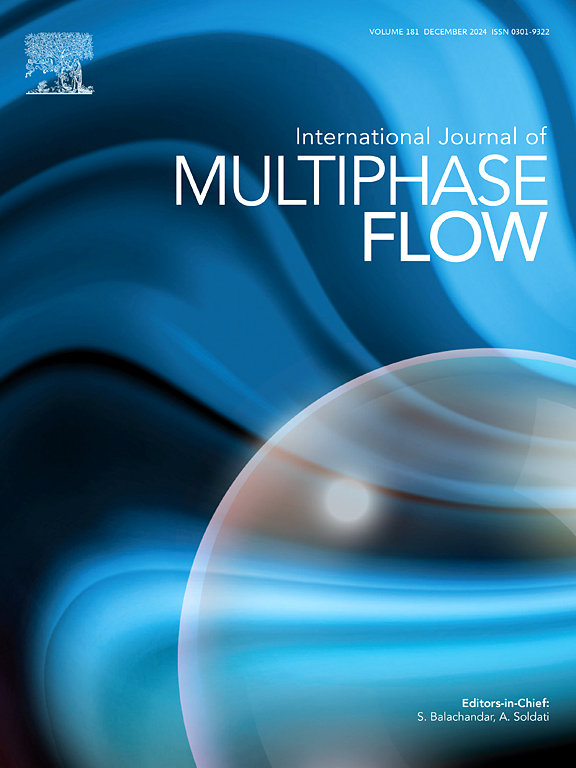Numerical study on the scale effect of tip vortex cavitation with special emphasis on non-condensable nuclei
IF 3.8
2区 工程技术
Q1 MECHANICS
International Journal of Multiphase Flow
Pub Date : 2025-06-27
DOI:10.1016/j.ijmultiphaseflow.2025.105346
引用次数: 0
Abstract
Tip vortex cavitation (TVC) around a family of elliptic NACA662–415 hydrofoils with different scales (λ=0.5, 0.75, 1) under the same cavitation number is simulated to study its scale effect. A satisfying agreement is obtained between the numerical and experimental results. Our results suggest that although TVC varies with scales without considering the influence of non-condensable nuclei, that difference is much more significant when nuclei effect is considered in the simulations. Moreover, it indicates that nuclei influence is more significant for a larger scale. It strongly proves the important role of nuclei in TVC scale effect. By comparing the pressure gradients in various directions, it is found that the pressure gradient in the radial direction leads to the enrichment of nuclei in the tip vortex core. With the increase of scale, the radial pressure gradient increases, which further causes the increase of nuclei concentration. In addition, a practical method for predicting nuclei concentration in the tip vortex core is proposed. The theoretical derivation indicates the proportionality between the dimensionless nuclei concentration in the tip vortex core and the dimensionless circulation, which is validated by the numerical results. A fitting equation between dimensionless nuclei concentration and tip vortex circulation is then provided, by which the nuclei concentration can be forecast without the time-consuming simulation of nuclei movement.

尖端涡空化尺度效应的数值研究,特别强调了不可冷凝核
模拟了不同尺度(λ=0.5, 0.75, 1)的椭圆型NACA662-415型水翼在相同空化数下的叶尖涡空化(TVC),研究了其尺度效应。数值计算结果与实验结果吻合较好。我们的研究结果表明,虽然不考虑不可凝聚核的影响,TVC随尺度的变化,但在模拟中考虑原子核效应时,这种差异更为显著。此外,这表明核的影响在更大的尺度上更为显著。这有力地证明了核在TVC规模效应中的重要作用。通过对各方向压力梯度的比较,发现径向压力梯度导致尖涡核内核的富集。随着尺度的增大,径向压力梯度增大,进一步引起核浓度的增大。此外,还提出了一种实用的预测尖端涡核核浓度的方法。理论推导表明了叶顶涡核的无因次核浓度与无因次循环成正比关系,数值结果验证了理论推导的正确性。提出了无因次核浓度与叶顶涡环流的拟合方程,该方程可以在不进行核运动模拟的情况下预测核浓度。
本文章由计算机程序翻译,如有差异,请以英文原文为准。
求助全文
约1分钟内获得全文
求助全文
来源期刊
CiteScore
7.30
自引率
10.50%
发文量
244
审稿时长
4 months
期刊介绍:
The International Journal of Multiphase Flow publishes analytical, numerical and experimental articles of lasting interest. The scope of the journal includes all aspects of mass, momentum and energy exchange phenomena among different phases such as occur in disperse flows, gas–liquid and liquid–liquid flows, flows in porous media, boiling, granular flows and others.
The journal publishes full papers, brief communications and conference announcements.

 求助内容:
求助内容: 应助结果提醒方式:
应助结果提醒方式:


